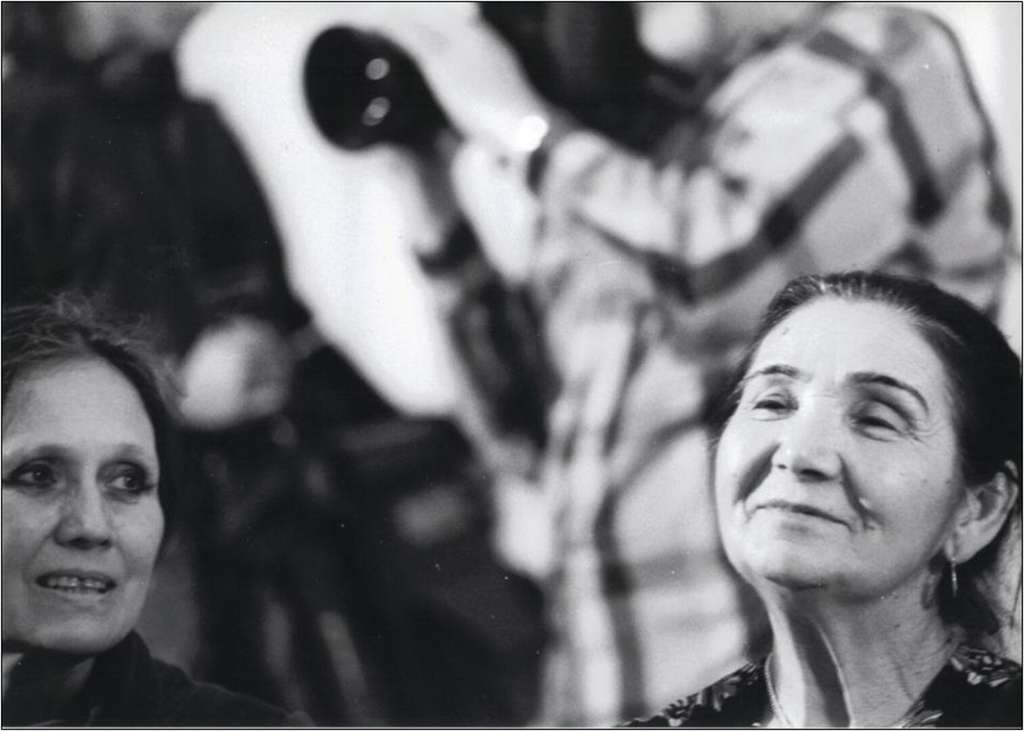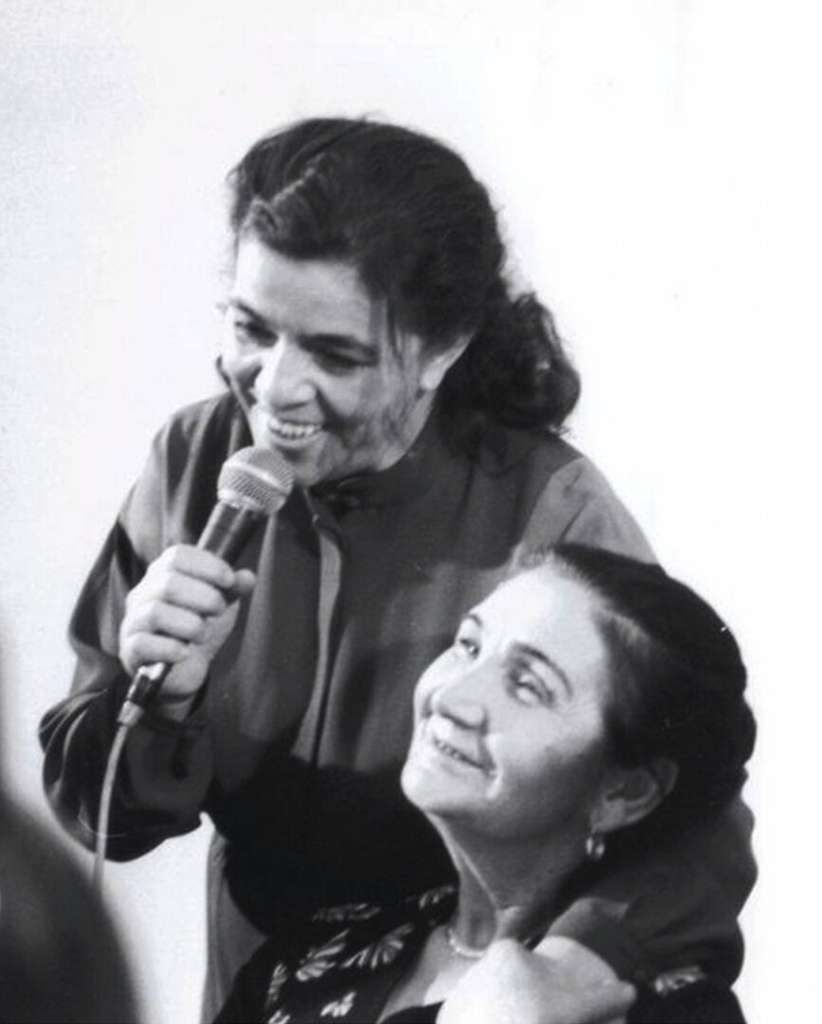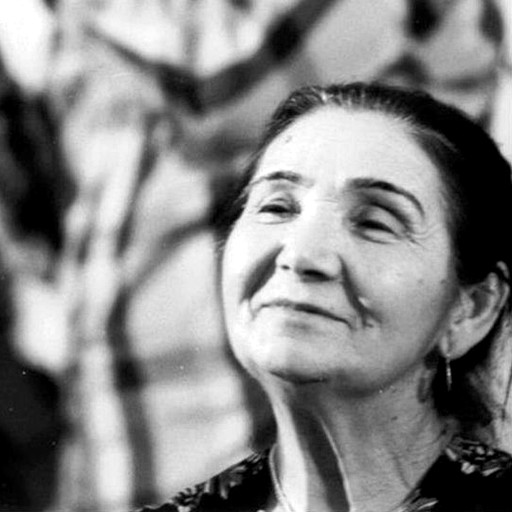The history of Romani writing on the territory of the former Czechoslovakia dates back to the late 1940s, when Elena Lacková, a Romani woman from one of the many Romani settlements in eastern Slovakia, decided to put down on paper the local Roma’s collective experience of the Second World War. She chose to write her work in the form of a drama, which she staged with the help of Roma from her settlement (the drama was published in Slovak in 1956). As she later described in her memoirs (Lacková and Hübschmannová, 1997), the performance was so successful that her family theatre company subsequently went on tour to various parts of Czechoslovakia and she herself caught the attention of what at the time were the highest expert circles dealing with what the Communist ideologists called ‘work among citizens of gypsy origin’ (the lower case ‘g’ was used intentionally to imply a lack of ethnicity).
Romani Literature in the Czech and Slovak Republics
As promising for the development of Romani literature as this theatre anecdote may have seemed, it was not until more than 20 years – in the late 1960s – that a small window of opportunity for other literary texts by Roma to be published was opened in Communist Czechoslovakia, only to close again in the early 1970s, this time until 1989. In the post-war years, ‘citizens of gypsy origin’ were presented as victims of previous oppressive regimes. They were made the object of diverse policies ranging from soft social-emancipatory measures to outright coercion, including attempts at population control and the restriction of free movement. Despite the fact that Roma were targeted by the Czechoslovak state authorities as a distinct group of citizens, they were denied the status of a national minority. As of the mid-1950s, any activities that seemed to be headed toward conferring such a status were discouraged or suppressed.
The reform years of the late 1960s, which climaxed in the Prague Spring, saw the establishment of the Union of Gypsies-Roma (UGR – ‘Svaz Cikánů Romů’ in Czech), a socio-cultural organisation founded by Czechoslovak Romani activists with the consent of the state authorities that existed from 1969 to 1973. The group included Romani personages who had been making their way up through the system – like Lacková – since the early 1950s, who partly embraced the Communist ideology and who were engaged in ‘work among the gypsy citizens’, while holding views on the Roma’s status that diverged from official assimilation policy.
The UGR’s newsletter, Románo ľil, became a platform for the publication of literary works by Roma, which motivated other new writers to publish. Andrej Giňa, Tera Fabiánová, Andrej Pešta and Elena Lacková, all of whom were involved with Románo ľil, are now considered the oldest generation of Romani writers in the former Czechoslovakia.
The concept of using Romani for literary goals resonates within Romani writers’ circles in this region to this day.
Expressing oneself publicly in literary form was a novelty for the Roma, all the more so in Romani, which, for Roma living in the former Czechoslovakia, served primarily as a medium of oral communication within the community. Its use in literary texts by Czechoslovak Roma was promoted by Milena Hübschmannová (1933–2005), one of the founders of Romani studies as an academic discipline in post-war Czechoslovakia and a fervent supporter of the national as well as international Romani emancipation movement. She promoted freedom of expression in one’s mother tongue and helped Romani writers – most of whom she knew personally and cooperated with for decades – to overcome the barriers linked with the transition from the use of Romani as a strictly spoken language to its written (and literary) forms.
During her lifetime, Hübschmannová not only inspired her talented Romani friends to put down their thoughts on paper, and to do so in Romani as their first language (see, for example, her recollection of the first poems written by Tera Fabiánová – Hübschmannová, 2003); she also a played a key role in those works being translated, published and disseminated among other Roma, which inspired the group to develop its own literary output and stimulated internal debate. The concept of using Romani for literary goals resonates within Romani writers’ circles in this region to this day. Moreover, it gave rise to what has become a tradition of bilingual (Czech/Slovak-Romani) publications.


Tera Fabiánová (née Kurinová) was born in Žihárec (formerly Czechoslovakia, today Slovakia) on 15 October 1930. She grew up in southern Slovakia, …
Románo ľil, the first official platform for Romani literary writing, ceased to exist with the forced dissolution of the UGR in 1973. Thereafter, it became difficult to publish literary texts by Roma, as a result of which such works were almost non-existent. However, this did not mean the disappearance altogether of the literary (or emancipation) movement; in the late 1980s, it resurfaced in parallel with the influence of the Soviet perestroika agenda in the wider society.
This period saw the emergence of song-and-dance groups in Romani circles (e.g. ‘Perumos’ and ‘Khamoro’ in Prague, ‘Amare neni’ in Rokycany and Emil Ščuka’s theatre company in Sokolov). New writers inspired by the work of their predecessors came to the fore, such as Margita Reiznerová, Ilona Ferková, Janko Horváth and Vlado Oláh. Romani writers residing in what is now the Czech Republic were able to meet one another not only within the unofficial network of politically/culturally engaged individuals but also at the Romani language (and creative writing) courses run by Hübschmannová in Prague, among other venues. The collective works of both the younger and the older generation were presented in Kale ruži, a volume edited by Hübschmannová in the late 1980s but not published until 1990.
In Slovakia, the emergence of Romani-language literature seemed to revolve less around specific groups or individuals.
In Slovakia, the emergence of Romani-language literature seemed to revolve less around specific groups or individuals. From the 1950s, Elena Lacková devoted her career to working with Romani communities, sidelining her literary ambitions until the 1980s. In the early 1960s, another outstanding figure of Romani literature in Slovakia emerged: Dezider Banga. While working as an editor in the literary department of Slovak TV in Košice in the 1960s, he started to write and publish well-received poetic works that were written in Slovak but clearly inspired by the Romani traditions of his childhood. Banga later translated his works into Romani (2012). In the early 1990s he edited and published an anthology of works by Romani poets from the former Czechoslovakia (1991).
The Velvet Revolution of 1989 provided new room for the development of the emancipation movement, accompanied by the short-lived proliferation of Romani magazines and newspapers (Amaro lav, Romano kurko, Amaro gendalos, Romano nevo ľil etc.) as well as small publishing houses interested in publishing Romani literary texts (e.g. the Romaňi čhib publishing house, run by Reiznerová between 1991 and 1996). Of the Romani-language magazines, Romano džaniben (Czech Republic) remains the most consistent platform for Romani literary writing, along with Romano nevo ľil (Slovakia) and, to a lesser extent, Romano hangos and Romano voďi (both Czech Republic).
Literature by Roma, however, remained on the fringes of public interest. It took more than another decade for Romani writers from the former Czechoslovakia to be taken on by larger publishing houses (Triáda, GplusG, Václav Havel Library) and begin their still unfinished journey to reach wider audiences.
These developments are well illustrated by Elena Lacková’s memoirs: the work first appeared in 1997, when it received limited attention only and seemed to be a publishing flop; today, however, it can boast its third reprint on the Czech book market by the Triáda publishing house. Since the 1990s, new writers have emerged, some of whom still have links to older writers and the influence of Hübschmannová, who died in 2005 (e.g. Emil Cina, Eva Danišová, Jana Hejkrlíková and Erika Oláhová) while others are more or less free agents (Irena Eliášová, Gejza Horváth, Iveta Kokyová and Roman Erös).
One of the most important events of Romani literary life in the former Czechoslovakia was the establishment of an online platform for Romani literature (launched by Hübschmannová’s disciples Lukáš Houdek and Radka Steklá in 2010 and later transformed into www.kher.cz), which publishes on-line short stories and e-books by Romani writers from both the Czech and Slovak Republics. ‘Kher’ writers include representatives of earlier generations (e.g. Vlado Oláh, Emil Cina) as well as new talents (Renata Berkyová). Participating Romani writers frm Slovakia include Pavla Cicková, Monika Kováčová, Karol Lazár, Martin Oláh and Zlatica Rusová.
Until 2017 Romano nevo ľil was the main publishing platform for Romani writers in Slovakia, some of whom have also had their works published by local publishing houses, often with the support of local authorities (e.g. Ladislav Tavali, Ján Šándor and Zlatica Rusová). Some writers appear to have achieved such success by adjusting to the majority’s taste: Janette Maziniová’s life-story Cigánka (2012) received wide acclaim, despite its racist overtones; Ľudovít Didi, who brought out four short novels during his lifetime with his exclusive publisher, Slovart, was a masterful writer who, however, repeated popular stereotypes about Roma. On the other hand, the grassroots organisation ‘Rolik’ (www.rolik.eu), a Romani literary club founded in 2009 in Slovakia, publishes an annual anthology of works by a growing network of Romani writers and has been active in the dissemination of their works and the development of an internal dialogue.
At present, Romani literary writing in the Czech and Slovak Republics is still partly nourished by oral tradition and not least the oral mindset, as some researchers point out (Karolína Ryvolová, Alena Scheinostová), while simultaneously departing from the folklore framework and moving towards individualisation and the promotion of creative writing as an autonomous artistic discipline (Jan Červenka, Karolína Ryvolová).
See: Oral Literature

They remain on the margins of the highest literary circles and the overall reception of literature...
If during various stages of its development Romani literature used to be one of the key platforms for the de/re-construction of Romani identity, nowadays ethno-specific topics and treatment are gradually giving way to more general messages and individualised expression of personal experience. Clearly, in the 60 years of its existence, Romani literature on the territory of the former Czechoslovakia has made profound progress in collectively presenting the writers’ experiences as Roma, which are deeply rooted in the history and development of former Czechoslovak society. Nevertheless, for various reasons – some of which owe less to prejudice than to the habitus of the human mind – they remain on the margins of the highest literary circles and the overall reception of literature.
It is also important to note that Romani writing in the Czech and Slovak Republics presents, above all, the experiences of the historically sedentary speakers of central Romani dialects, the so-called Slovak and Hungarian Roma. There are very few Vlax Romani voices (e.g. Peter Stojka and Iveta Kokyová, the latter of whom chooses to write in Czech or Central Romani rather than in Vlax Romani).
The autochthonous pre-war Romani population of the Czech lands, which suffered enormously during the Holocaust, is represented only in the genre of autobiography (Karolína Kozáková, Elina Machálková, Karel Holomek); however, it should not be overlooked that this genre had its forerunners, for example, the still unpublished autobiography of Rudolf Daniel, written in the early 1950s, and the short autobiographical story by Leon Růžička, published in 1958 – which, to date, are the oldest attested endeavours to record in writing the history of this community in the former Czechoslovakia of t
Rights held by: Helena Sadílková (text) | Licensed by: Helena Sadílková | Licensed under: CC-BY-NC 3.0 Germany | Provided by: RomArchive




